Submitted by zenno on Wed, 01/07/2009 - 03:33
A near-black vase with bright swatches of green, blue and pink marks America's 1878 entry into what we now call Art Glass.
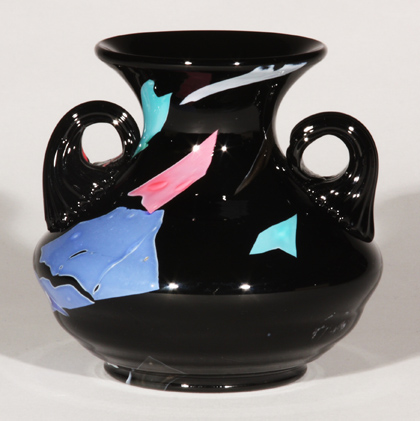
1878 — all fashionable manufacturers went to Paris for its Universal Exposition, the latest World's Fair. Gallé, Webb and the Venice and Murano Company displayed adventurous glass designs. An American visitor wanted to shout out loud,
Submitted by zenno on Thu, 05/29/2008 - 10:30
This seven inch diameter footed bowl with hinged tin lid was known in its day as a cracker bowl or bar sugar.
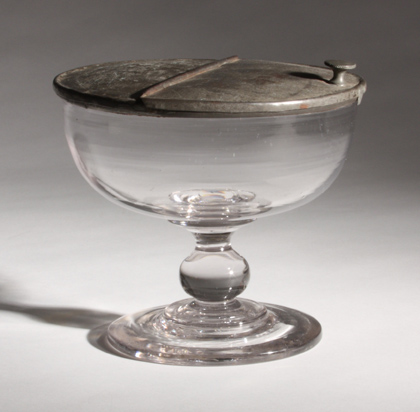
The original use of antique objects is often lost to time. Without its lid this bowl might be called a small compote or footed bowl. However, with fitted metal lid and rim it was clearly made for some special purpose.
Submitted by zenno on Mon, 05/26/2008 - 10:15
Two six inch plates with identical centers but different borders reveal a major innovation in early American pressing - the cap ring.
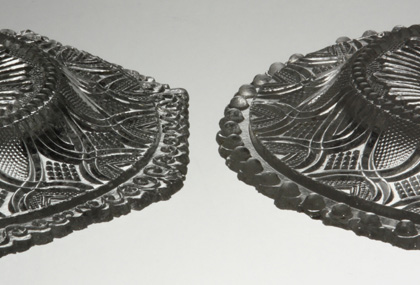
Early collectors of American glass were astonished at the sheer variety in pressed glass design. Close comparisson would show that two plates with radically different borders had identical centers. How could factories afford to create so many molds and, since it appeared that they did, why go to so much trouble to replicate the designs so precisely?
Submitted by zenno on Sun, 03/16/2008 - 18:30
A pitcher and large bowl made in the Boston area in the 1820s highlight the esthetics, technology and economics of one of the more distinctively American categories of early nineteenth century glass.
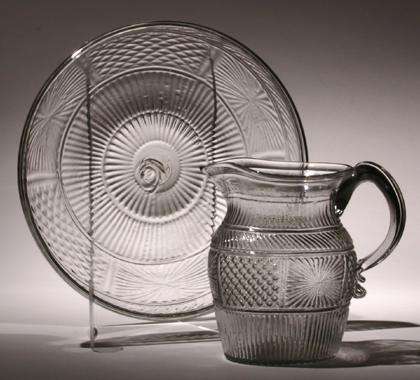
Both pieces received their pattern in the same three part, hinged, decanter-shape mold before being further shaped by the glassblower into their final form.
Submitted by zenno on Tue, 03/11/2008 - 04:00
Two rare flasks of brilliant Ohio glass are icons of the '20s - both the 1820s of their manufacture and the 1920s research of Harry Hall White.
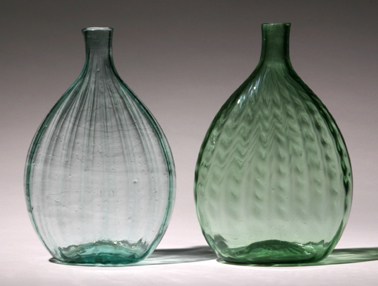
Portage County is south of White's home town Cleveland in what was once the Western Reserve of Connecticut. As White scoured the countryside looking for old glass he heard locals talk of Mantua bottles and Kent flasks.
Submitted by zenno on Sat, 12/15/2007 - 23:00
With its prominent band of pointed arches reminiscent of a medieval cathedral, this compote is one of the more spectacular glass objects of the American Gothic Revival.
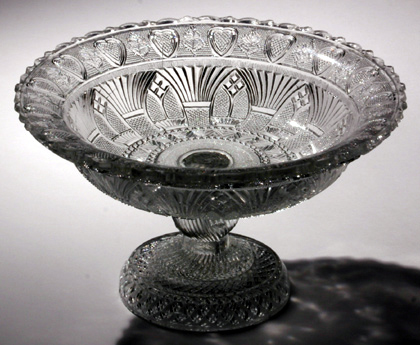
The Gothic Revival in America was inspired by its counterpart in England where architects and decorative artists joined painters and writers in the Romantic rejection of earlier Classical formality.
Submitted by zenno on Sat, 12/15/2007 - 20:51
Globular bottles from Zanesville and other factories in Ohio shine in gem-like shades of amber, aquamarine and, more rarely, green. Ever so often one stands out from the crowd.
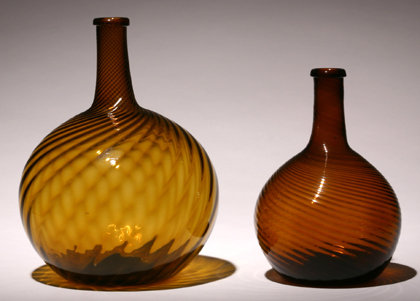
Since most are of similar size, large ones such as the one on the left are particularly admired.
Submitted by zenno on Thu, 04/19/2007 - 03:26
Eighteenth century English cosmetic jars of a form excavated in Philadelphia were the prototype for a small American ribbed vessel.
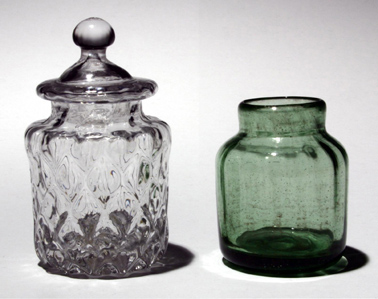
The earliest ceramics, silver, furniture and glass made in and near Pennsylvania combined English forms and Germanic technique.
Submitted by zenno on Thu, 04/19/2007 - 02:30
Strikingly similar in form, two thistle-shaped vases with knopped stems and round, flat feet represent opposite extremes of 1830s’ decoration.
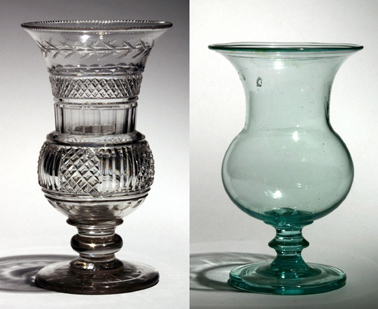
In the 1830s, cut glass was a highly prized luxury article. Cut decoration required a considerable amount of effort and expense. The extravagant, all-over decoration of this vase was a widely recognized sign of wealth and distinction.
Submitted by zenno on Wed, 01/10/2007 - 14:16
In 1840 a representative of the Meissen porcelain factory in Dresden, Germany, complained that they had received so few "new glass samples since 1838" that the factory may be forced into "the invention of their own designs."
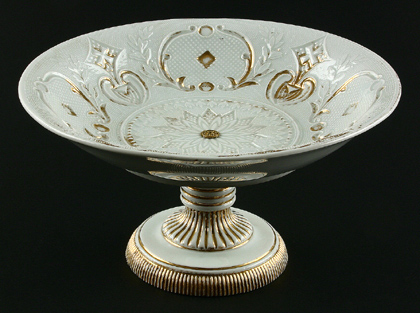
Pages